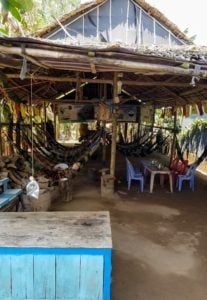Phnom Penh - Riches of the Mekong #6
Phnom Penh means different things to different people. On AmaWaterways Riches of the Mekong, Phnom...
Today we make our way into the Mekong Delta. Yesterday was a really nice day cruising the Mekong South out of Cambodia and into Vietnam. There were lots of activities on board if you wanted to participate including ice cream tasting, a lecture on Vietnamese culture, a cooking class. Many passengers were in the swimming pool, up on deck under the shade or just hanging out.
This blog post is one in a series about our trip on AmaWaterways Riches of the Mekong river cruise. Preview our previous post about Khmer Rouge.
Today we enter the Mekong delta.
The first city we encounter is Tan Chau. This is a city of about 200,000. It's the closest city to Cambodia and grew about 10 - 20 years ago as a smugglers entry point into Vietnam. Today, police and advanced economics have reduced smuggling. It's now a major rice production and export center. The Mekong delta is Vietnam's rice basket.
The area is also famous for silk and rattan production. We're off to see both today.
But first we have to get there.
The AmaDara anchors in the river and we take a small tender to Tan Chau. While this is a pretty large city, like most of our stops along the Mekong, it just doesn't have the pier infrastruture to allow our ship to dock directly. So the small tender gets us to shore.
From there we queue up for a Rickshaw ride. These are bicycle powered, one person rickshaws (Tri cycle) These are now outlawed in the city due to safety reasons but allowed for tourists.
The ride was smooth and instructive in terms of what a relatively small city looks like. This is another bustling center with a nice waterfront and several shopping districts.
After our rickshaw ride, we arrived at the silk factory. We had just been to a silk factory in Cambodia already so why bother going to another? While the Cambodians made silk products by hand, here in Tan Chau Vietnam, they have a mechanized process. And by mechanized I don't mean the latest technology. I'm talking about early Industrial Revolution (18th and 19th century). Walking through the shop was like walking through American manufacturing history.
The shop was buzzing with activity - mostly mechanically driven looms. They produced colors and patterns at a scale that would be unattainable by the Cambodian methods. But the shop would have violated every OSHA regulation in the book: noise, finger safety, spacing, working conditions, etc. It's easy to forget how far the US has come from the Industrial Revolution days until you see a shop like this in Vietnam.
The Mekong delta is rich in many resources. But one that is produced only here is the Diospyros mollis fruit. The factory uses this fruit to dye the silk black and this is what makes it world famous. There were pictures of Angolina Jolie wearing a black silk dress from this factory. Here's some more information.
Although previous posts have mentioned how hot it is today, it bears repeating. We are all drenched because of the 96 F heat and humidity. The Mekong Delta maybe all about rice production but it's also all about the tropics.
Locals find that sleeping on a mattress is too hot - remember there's not a lot of air conditioning in the local villages. So over time, they've evolved to using rattan mats. So after a short rickshaw ride, we arrive at a local rattan factory. Again very rudimentary. In fact here women were feeding strands of rattan into the machines to make a pattern. We even spotted a little boy at a sewing machines. More shades of early American industrial production.
After the rattan factory tour (ending with some shopping time of course) we walked through the small village to our small transfer boat. We passed a lotus field and lots of small village houses. Our guide informed us that the houses by the road might go for $15,000 while the ones away from the main road are much cheaper. Two observations:
Having said that, there were some very nice house closer to the city that we had passed on our rickshaw ride.
The transfer boat took us to a small island not far away called Evergreen island. The point here was to see true local people live a similarly simple life as previous generations. The island typically floods during rainy season which provides a nutrient rich silt covering to the earth. The most famous crop here are hot chili peppers. A few observations:
Life is very simple here - no cars, only scooters
After a short boat ride, we arrive at the AmaWaterways AmaDara. We wash up and try to cool down. After a nice lunch we have nice rest in the afternoon (for a travel agent that means catching up on emails, chasing down some vendors and even making a booking or two). We are sailing down the Mekong delta this afternoon so it's another restful afternoon. Good thing too since the tropical weather is physically draining. Luckily it's a beautiful ship.
Here's some "bonus" photos of the day:
 After a hard day in the fields, workers on Evergreen island come here for tea and to rest in the hammock
After a hard day in the fields, workers on Evergreen island come here for tea and to rest in the hammock
Phnom Penh means different things to different people. On AmaWaterways Riches of the Mekong, Phnom...
This is the capstone post about our AmaWaterways Riches of the Mekong river cruise in early April...